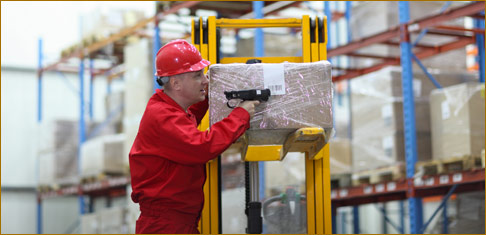Welcome to the first StayLinked Tech Topics blog post. Our Tech Topics will dig into some of the features that make StayLinked so special. We will also use Tech Topics posts to highlight product tips and tricks. We look forward to your feedback.

In most businesses, there’s a strong case for standardizing as much of each business process as possible. The more variables you have to manage, the tougher it becomes to keep everyone working. However, no matter how much you might want to standardize everything, there’s always something that doesn’t fit the model.
As an example, most warehouse environments have a combination of handheld computers and vehicle mounted systems (VMU). These VMU devices typically have a full or half screen display. They can show more on the screen, or show it larger for better clarity or additional information. Another example would be that some users perform shipping functions, while others work on receiving product. Receivers typically work with pallets and cases of cases, while shippers work in smaller units and higher variety.
These and other variables create the need for a system within a system. Everyone in an organization may use the same hosted application, but there will be a different user experience for each combination of variables.
Any robust enterprise system will have various levels to create a hierarchy. This organizational structure allows users to fall into groups or segments that provide the customizations required for their task. These group assignments can be by network address, username, device type, answerback messages, workstation names, or several other possible identifiers and combinations of identifiers.
In StayLinked, as devices connect, they are placed into a device group. The IT admin can create specific user groups that present each user with the choices that the admin would like them to see. A common example would be to create a test group that allows technical staff access to both a production server and a sandbox server to perform testing. In many cases, customers create multiple entries for the same physical server, but the sign-on or answerback message determines the different views of the application. This means that the flexibility in the telnet client must match and compliment the requirements of the telnet server and hosted application.
Many of the settings available to the device group are also available at the telnet host group. This allows settings to be configured where they make sense, at the server level or at the user level. This becomes especially important when the users are given access to multiple servers. Unless each server works the exact same way, you may need to have different startup scripts, barcode rules, screen dimensions or other server-dependent settings.
All of these options provide incredible flexibility, and over the years we’ve found that there are hundreds of different settings that can be configured for a typical telnet connection.
StayLinked also provides device configuration options that are independent of the telnet configuration. These settings range from beep volumes and duration, to the type of cursor to be displayed. The settings can be globally or selectively distributed based on hardware address, network address, device type or combinations of these values.
All of these settings are configured via the StayLinked Administrator console, which is included with the purchase of StayLinked emulation licenses.
Years ago, our development team announced that the StayLinked product was complete. They had met the needs of our customers and included all of the features that might be required. After several more years, dozens of new features and a fair amount of poking fun at those developers, we’ve learned that we’re never really done. Now, following each subsequent StayLinked version release, our team asks these simple questions, “All right, what’s next? How can we help our customers improve their business processes?”


